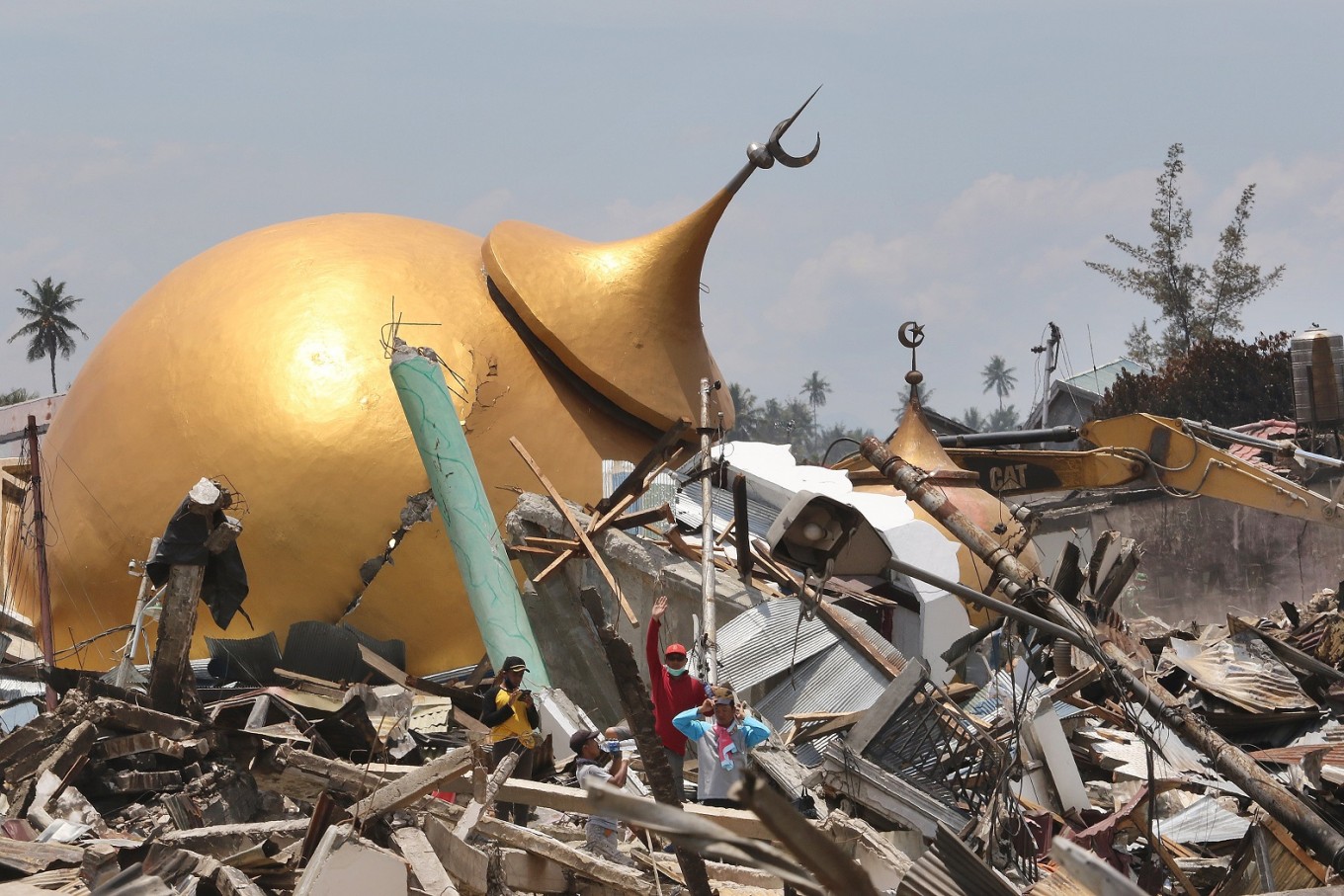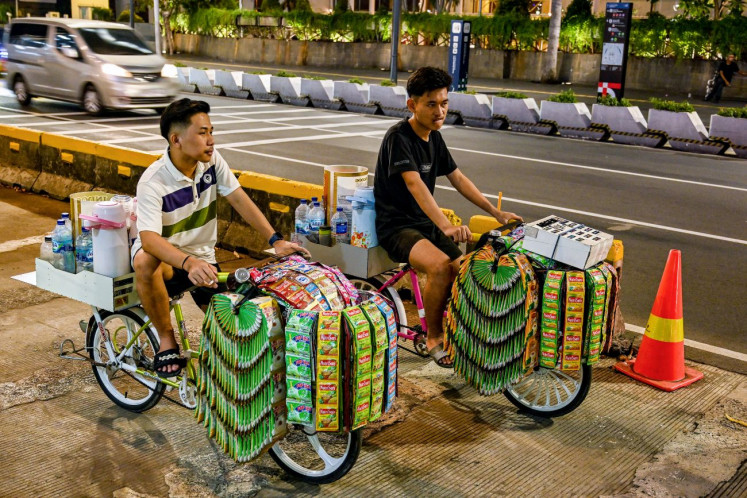Popular Reads
Top Results
Can't find what you're looking for?
View all search resultsPopular Reads
Top Results
Can't find what you're looking for?
View all search resultsStrengthening disaster financing policies
Every year, the government spends around Rp 4 trillion (about US$285.70 million) on programs to improve disaster resilience.
Change text size
Gift Premium Articles
to Anyone
B
esides being naturally prone to disasters, based on the World Risk Index, Indonesia is also among the riskiest places in the world due to a lack of coping and adaptive capacities. An important resilience factor to improve is financing effectiveness.
Every year, the government spends around Rp 4 trillion (about US$285.70 million) on programs to improve disaster resilience. This amount, even if added with support from international communities, still could not cover the actual economic loss of extreme events like Aceh’s earthquake and tsunami of December 2004. As such capacity is limited by fiscal regulation, Indonesia should work toward improving the current financing capacity.
This requires a thorough examination of the institutional and instrument readiness Indonesia already has with its framework for disaster mitigation, Law No. 24/2007.
It highlights the importance of actions before, during and after natural disasters.
The law, however, does not specify disaster risk financing strategies. It only states that we have funds through the central and local government and National Disaster Mitigation Agency (BNPB) budgets.
However, breakthroughs through financial instruments are still needed. One principle of disaster finance is readiness of funds in emergencies. Development of financial instruments in this area includes insurance types of financing.
Typically, such instruments can facilitate the transfer of risks. With an insurance mechanism, we would have a standby fund that could be used anytime. Indonesia has already implemented the insurance model in emergencies for assets or goods owned by state-owned companies and local governments.
A disaster risk insurance scheme can become a solution in Indonesia. However, properties or capital goods, for instance, have not been adequately covered by insurance.
There are two challenges behind this gap, which are low awareness on properties insurance and the slow process of claim settlement – one claim can be processed between one and two years. Besides building awareness on the need to insure properties against catastrophe risks, Indonesia needs to also develop alternative solutions to address the problem.
One potential solution is to introduce creative instruments such as catastrophic bonds. Catastrophic bonds have been used in many countries due to their practicality. Mexico, for instance, has used this scheme to anticipate long payouts. The catastrophic bond will allow the government to immediately get funding in the event of disasters.
The government pays interest based on pricing. The success of this type of bond depends on how one would structure it so it can be executed efficiently. There are many underlying models that can be applied, such as the “parametric” model.
For example, Mexico used such a model by linking payouts with financial costs or damages. Failure to define the triggering event will result in inability to get quick funding.
This requires sound data management. In Mexico’s case, the payment could take an average of 103 days.
Assessing if a disaster event meets the criteria to receive funding is thus a considerable challenge. A huge cost will occur if the triggering event does not meet the criteria for payment as the government will have to keep paying interest and fees of the bonds.
One of the main challenges related to state budget management in Indonesia is the low quality of spending. If the government wants to implement some new initiatives to increase the disaster management budget through disaster risk insurance and catastrophic bonds, it needs to make sure that the money will be spent in the most effective way possible.
First, there should be a specific account like an escrow to ensure that the money does not go to general financing and only to disaster recovery measures. From here, the effectiveness and accountability of disaster budget expenditures would be improved.
Second, the government should always work closely with local key stakeholders, such as NGOs, local leaders and residents. The central government can have a national disaster management plan, but a significant role of the local government will always be needed.
Every local government needs to translate the national plan into local plans, which should focus on bringing people to work together in disaster management plans. This promotes a sense of urgency and a strong foundation on which residents could maintain cooperation in difficult times and also shape their perceptions of risk for better preparedness.
Third, the government can allocate a budget for programs to preserve local wisdoms, which should be an important part of the disaster management plan, especially at the local level. In Aceh, ancestors had passed down their experience of earlier smong (tsunami) through songs and poems including directions to run up hills in the event of earthquakes followed by receding tidewater.
This local knowledge saved some people from the tsunami in 2004. Another example is the paseduluran (brotherhood) concept in Bantul, Yogyakarta. After the earthquake, the value of closeness among locals based on this concept encouraged people to help each other rebuild homes. These local wisdoms should be preserved for example by integrating the values into the curriculum.
Last but not least is the allocation of funds to supporting research and innovation related to disasters. It is great that PetaBencana.id, a web-based platform for emergency response and disaster management created by the BNPB, won at the United Nations Public Service Awards in 2019.
However, we need more innovations by strengthening coordination such as with other countries, especially Southeast Asian neighbors. All the above suggestions also need comprehensive evaluation for effective spending.
***
The writers are economists at the Finance Ministry. The views expressed are their own.










